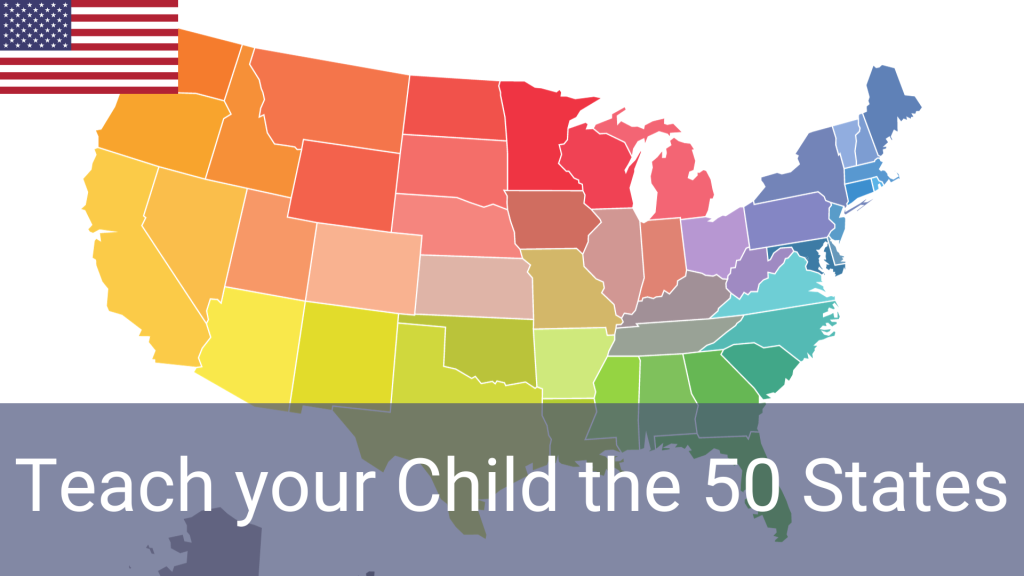In this article:
Introduction
As parents, we all want the best for our children. We want to equip them with knowledge, skills, and experiences that will help them succeed in life. One important aspect of a well-rounded education is understanding the geography of our own country. Teaching your child about the 50 states of the United States is not only a valuable educational endeavor but also a fun and engaging way to spend quality time together. In this comprehensive guide, we will explore effective methods and resources to help you teach your child about the 50 states in an engaging and memorable manner.
Start with the Basics
Before diving into the specifics of each state, it’s essential to provide your child with some foundational knowledge about the United States. Begin with:
- Understanding the Map: Show your child a map of the United States. Point out major geographic features like oceans, rivers, and mountain ranges. Explain the concept of states within the country.
- The Importance of Geography: Help your child understand why geography matters. Explain how geography influences climate, culture, and even the economy.
- The 50 States Song: Introduce the famous “50 States Song” to make learning the names of the states fun. There are various versions of this song available online, and it’s a catchy way for kids to remember the states in alphabetical order.
Interactive Learning
Children often learn best through hands-on experiences and interactive activities. Here are some engaging ways to teach them about the 50 states:
- Puzzle Maps: Invest in a puzzle map of the United States. Assemble it together and discuss each state as you place it in its correct location. This tactile experience helps children grasp the physical layout of the country.
- State Flags and Symbols: Explore the flags and symbols of each state. Create flashcards with the state flag on one side and important information (like the state’s nickname and capital) on the other. Quiz your child on these facts.
- Cooking Adventures: Prepare dishes that are unique to each state. For example, you can make clam chowder for Massachusetts or barbecue for Texas. This culinary journey can be a tasty way to learn about regional cuisine.
- Travel Journals: If you have the opportunity to visit different states, encourage your child to keep a travel journal. They can document their experiences, draw pictures, and collect souvenirs to create a personalized record of their travels.
Use Technology and Educational Resources
In today’s digital age, there are numerous online resources and apps designed to make learning about the 50 states engaging. Here are a few to consider:
- Interactive Websites: Websites like National Geographic Kids and 50states.com offer interactive maps, quizzes, and games to help children learn about the states.
- Educational Apps: Explore educational apps designed for teaching geography. Apps like “Stack the States” and “GeoBee Challenge” are both entertaining and informative.
- Virtual Tours: Take advantage of virtual tours and videos that showcase different states’ landmarks and attractions. It’s a fantastic way to explore the country from the comfort of your home.
Make Learning a Routine
Consistency is key when it comes to education. Establish a routine for learning about the 50 states. For example:
- State of the Week: Focus on one state each week. Explore its geography, history, and culture in depth. By the end of the year, your child will have a comprehensive understanding of all 50 states.
- Trivia Night: Dedicate one night a week to a “state trivia” session. Quiz your child on facts about different states. Make it competitive and fun by keeping score.
Encourage Reading and Research
Reading is a fundamental skill, and it can be a powerful tool for learning about the 50 states. Consider the following strategies:
- Library Visits: Take regular trips to the library and check out books about the United States and its states. Look for both fiction and non-fiction titles to engage your child’s imagination.
- State Reports: Assign your child a state to research in depth. Have them create a report with information about the state’s history, geography, and interesting facts. This project can be a great way to enhance their research and writing skills.
- Historical Fiction: Explore historical fiction books set in different states. These novels can provide a vivid sense of a state’s history and culture.
Field Trips and Hands-On Learning
Whenever possible, incorporate field trips into your child’s learning experience:
- State Parks and Landmarks: Visit state parks, historical landmarks, and museums related to specific states. These trips can provide a real-world connection to what your child is learning.
- State Capitals: If feasible, consider taking a road trip to visit state capitals. This hands-on experience can be both educational and adventurous.
Learning Games and Quizzes
Engage your child in friendly competitions and games related to the 50 states:
- Geography Bee: Organize a geography bee at home. Ask your child questions about the states, their capitals, and other interesting facts. Offer small prizes for correct answers.
- State Bingo: Create bingo cards with the names of different states. Call out facts about the states, and your child can mark the corresponding state on their card. It’s a fun way to reinforce knowledge.
Connect Learning to Real Life
Help your child see the relevance of their knowledge:
- Family Roots: Explore your family’s heritage and connections to different states. This can make learning about those states more personal and meaningful.
- Current Events: Discuss current events in different states. For example, if a natural disaster occurs in a particular state, use it as an opportunity to discuss geography and empathy.
- Travel Planning: Involve your child in planning family vacations. Let them help choose destinations and learn about the states you’ll be visiting.
Conclusion
Teaching your child about the 50 states is not just about rote memorization; it’s about fostering a love for learning, curiosity about the world, and an appreciation for the diverse regions of the United States. By following these methods and utilizing available resources, you can make the journey of discovering the 50 states an enjoyable and enriching experience for both you and your child. Remember, the goal is not just to teach facts but to inspire a lifelong passion for geography and exploration.




